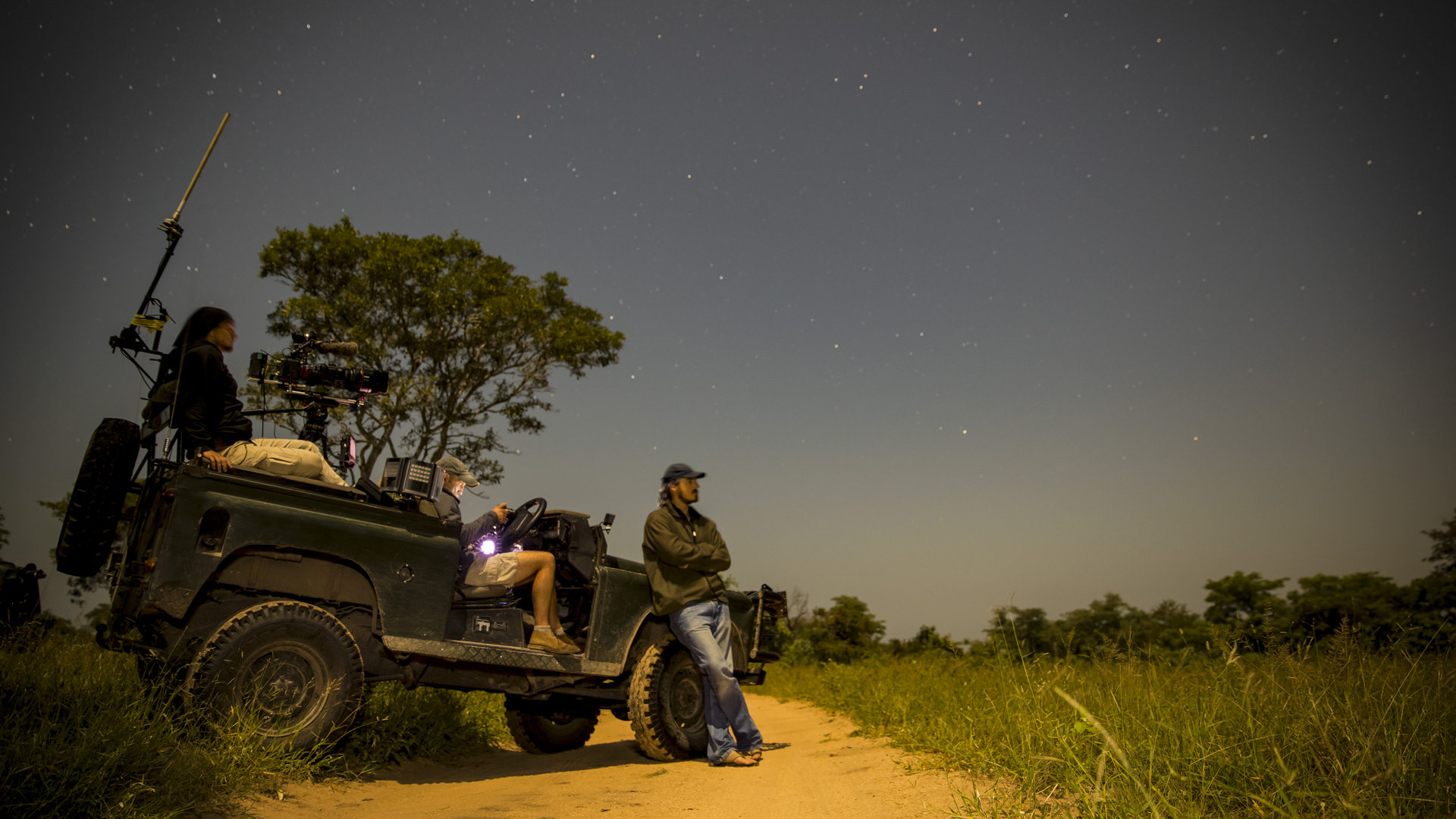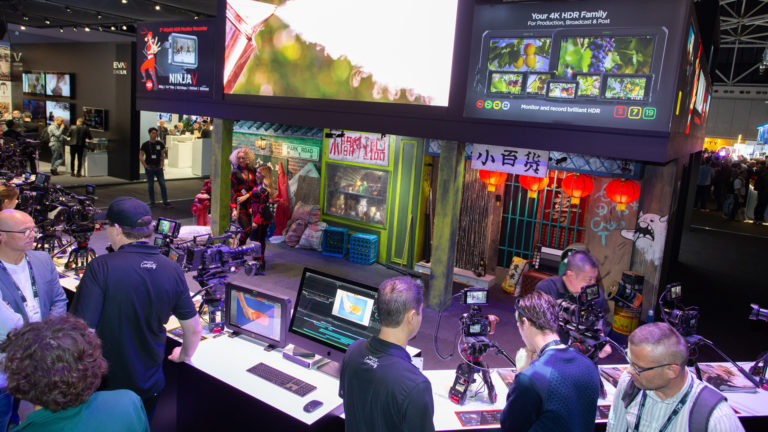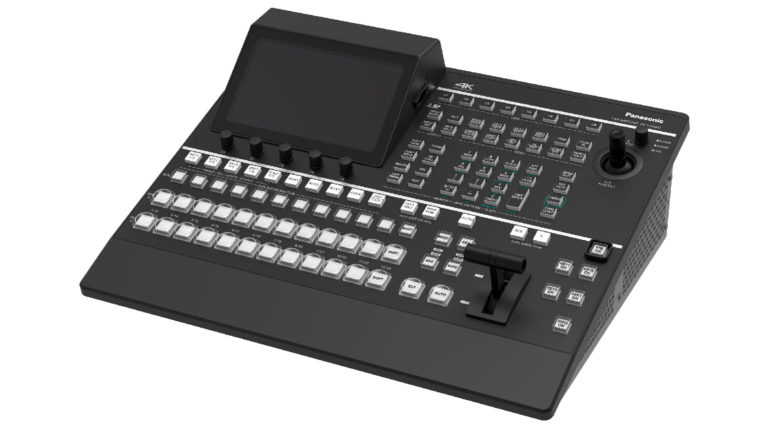Executive Producer Al Berman on Making Real-Time Television — and Natural — History with the ME20F-SH
Al Berman is no stranger to live television. An Emmy-winning veteran news producer for CBS Evening News, 48 Hours and other news shows, he has gone on to produce some 5,500 hours of live network programming, from the season finales of The Apprentice, The Biggest Loser and The Contender for NBC and Survivor for CBS. (Fun fact: he also came up with the “live reveal” and “reunion” show concept now ubiquitous across the airwaves.)
But capturing a wide geographic range of wild animals, many in pitch-black natural environments lit only by the full moon, in real time? Not exactly.
After executive-producing NatGeo’s successful Live from Space and Astronauts Live for the UK’s Channel 4 in 2014, he struck on another idea: use the live concept to showcase the work of talented wildlife cinematographers filming elusive animals in remote habitats as it happens. Then switch back and forth, as the drama and surprises unfold, between the developing footage.
Berman had been toying with the idea of doing a live nature show with sharks and had previously worked with underwater photographers. Yet he was unsure of how to vividly and dramatically film scenes on land at night, when many animals are most active. Although military-grade infrared and thermal cameras can net fascinating results, a true color rendering of nighttime shots was as elusive as Brazil’s rare ocelot (which DP Steve Winter eventually found and filmed for the show).
Then he stumbled on the Canon ME20F-SH, got wind of the camera’s ability to reach 4 million ISO, and got an early demonstration of what it could do; he knew it was ideal for the new nature show he’d been developing. “I thought, ‘This could open up a whole new category of live television.’ I talked to my tech manager and tried to figure out if there was a way to reconfigure the camera for a live broadcast and she said yes. So I ran to National Geographic and said, ‘Here’s an opportunity for you to do something that’s never been done before: to broadcast live, from areas of darkness, without any artificial light.’ They loved it.”

Produced almost as a world series for nature cinematographers—thanks to a slick, fully practical studio set, expert announcers, and a multi-screen live sports atmosphere complete with sizzles, ticker stats and map graphics—Earth Live was not your typical nature doc. “I originally wanted it to be big, but NatGeo wanted it to be even bigger,” says Berman. “We really went for it. NatGeo president Tim Pastore and I actually fist-bumped when we decided to go all-in. In the end, though, it came down to budget, and it expanded and contracted until it finally landed where it did. We built that studio set and there was nothing virtual about it. There was no CGI, except for the graphics as we zoomed in to the map locations before we went live in each location. This show was about a singular moment in time and we knew we had to stay true to that idea to make it work. It’s all real, and that kind of became our M.O.”

In all, the show had 57 cameras, including nine customized Canon ME20F-SHs, in 28 locations in 17 countries on 16 continents. Six nature cinematographers, including Andy Casagrande (in the water with deadly bull sharks), Sophie Darlington (a 24-year photographer of lions, above) and Bob Poole (who captured the other-worldly hyenas of Harar, Ethiopia, as well as this amazing man, Abbas Yusuf) created the images. The show was simulcast globally on National Geographic and Nat Geo Wild in 171 countries and 45 languages.
“We partnered with Plimsoll Productions, out of Bristol, UK,” says Berman, who also got help from his own Berman Productions and reality TV mega-producer Bunim Murray. “The guys at Plimsoll used to run the BBC, so they brought in the wildlife cinematographers and recommended the locations. We had about 25 shooters that we winnowed down, with the addition of two National Geographic explorer/cinematographers, to the six we called ‘witness camera ops.’ We had many other terrific shooters who we ended up not showing on air and who captured additional footage, as well as the primary camera ops seen in the show.”
Only Titanic discoverer Dr. Robert Ballard, who was off the coast of California in a submersible near his exploration vessel Nautilus, was unable to participate at the last minute. “They had to pull his submarine out of the water at the last minute due to high seas,” he says. “That was going to be a very powerful moment for us to connect with him 1,000 feet beneath the ocean. But it didn’t work.”

Earth Live was intended, by design, to highlight the unexpected play, industry and sheer savagery of animals in the wild. “The plan was for things not to go according to plan,” says Berman. “We laid out a broadcast, which was the best broadcast that we could lay out based on what we expected to happen, which was also the unexpected. I told our team, ‘The best show we can have is one that is unpredictable and we’re flying by the seat of our pants. Even so, we got up to a pretty predictable path but soon a lion was on the hunt, so we lost him to the night, and we were going to go to a very rare wolverine in Finland, but there was no wolverine, so we held off on that. But then we got a hit from our humpback whale ‘SnotBot’ drone following them in the open water, the wolverine reappeared, a lion mother starting cuddling and playing with her young cubs, and things just started to work. So we just changed the order of feeds on the fly.”
Co-hosts Jane Lynch and The Amazing Race’s Phil Keoghan, who were joined by the always-enthusiastic British wildlife expert and cinematographer Chris Packham, were ready and game to follow each feed as director Glenn Weiss and the team discovered them. “We rehearsed those hypothetical quick-change shifts, and everyone on set and in the control room was ready for them. When it came to showtime, it really was one of the most fun places on the planet to be. We were rockin’ and changing things on the fly and having so much fun. It reminded me of my breaking news days for sure.”
Trucks from AMV Digital Media handled the live feed and switching. “AMV does the most live shows on the planet, and this was the most complicated show they had ever done,” Berman says. “We needed to be able to turn on a dime for those moments we could have never predicted, like when the badgers in England just starting mating. Everyone got a big laugh initially out of that — the seagull photobombing the wolverine was a close second — but the interesting thing was our expert, Chris Packham, then had an impromptu, great story about the fact that badgers mate in a very interesting way and that they selectively choose which babies to bring to term. So we ended up learning something really fascinating about this unexpected moment. Unlike virtually every other wildlife show, this was not only live, but just packed with information. That was all part of our design. National Geographic asked that it be informative and entertaining, and I think we delivered on that.”

To figure out how far they could push the Canon ME20F-SH cameras for night footage, Berman and his tech crew went to South Africa in March for a field test. “We really learned a lot,” he says. “We worked with Wild Earth, which produces Safari Live and streams it to classrooms worldwide and on YouTube, and hired them to do work with us. The most important thing we did there was to figure out the ideal settings to shoot wildlife under moonlight: what filters, is the IR filter in or out, what dBs we needed to use, etc. We also learned that we had to adjust them all slightly for different locations, but to get it to that narrow window where it could capture in darkness but look as good as it could look. The reason we starting calling it the ‘MoonCam’ is people were at first confused when they saw the footage; they thought it was shot in daylight. So we came up with the idea of labeling it MoonCam so you know exactly what you’re looking at.”

Glass on all of the ME20s were Canon Cine-Servo 50–1000mm lenses, “probably the best piece of glass on the market,” he says. A Selex SE thermal camera, which has been used in several BBC nature series, captured additional footage of a lion pride and a tiny POV camera was attached to a golden eagle.
The truest endorsement of the quality of the Canon cameras came from the cinematographers themselves. You can hear it in Steve Winter’s and Sophie Darlington’s voices when they are seeing the clear, sharp images of these nocturnal beasts in color for the first time. “Sophie, Steve and Bob really loved the ME20, and we had another ME20 shooting them,” Berman says. “We had a third ME20 on location with that team in Maasai Mara National Preserve in Kenya on a vehicle shooting whatever they could find.”
While the show made television history for the way it was filmed and the images it broadcast, Earth Live also delivered an even more important idea: this constantly changing natural diversity is part of who we are, humans and animals, on this amazing and fragile planet we both call home. “We all want to try to do new things,” Berman concludes, “but to actually get the opportunity to do something this new and this special was just such a thrill.”
Check local listings for recorded rebroadcasts of Earth Live on the National Geographic channel worldwide.
Crafts: Broadcasting Shooting
Sections: Creativity
Topics: Feature Al Berman Bob Poole Canon Chris Packham Cine-Servo 50-1000mm lens ME20F-SH national geographic Sophie Darlington Steve Winter Super 35mm full-frame sensor wildlife cinemagraphy
Did you enjoy this article? Sign up to receive the StudioDaily Fix eletter containing the latest stories, including news, videos, interviews, reviews and more.











Leave a Reply